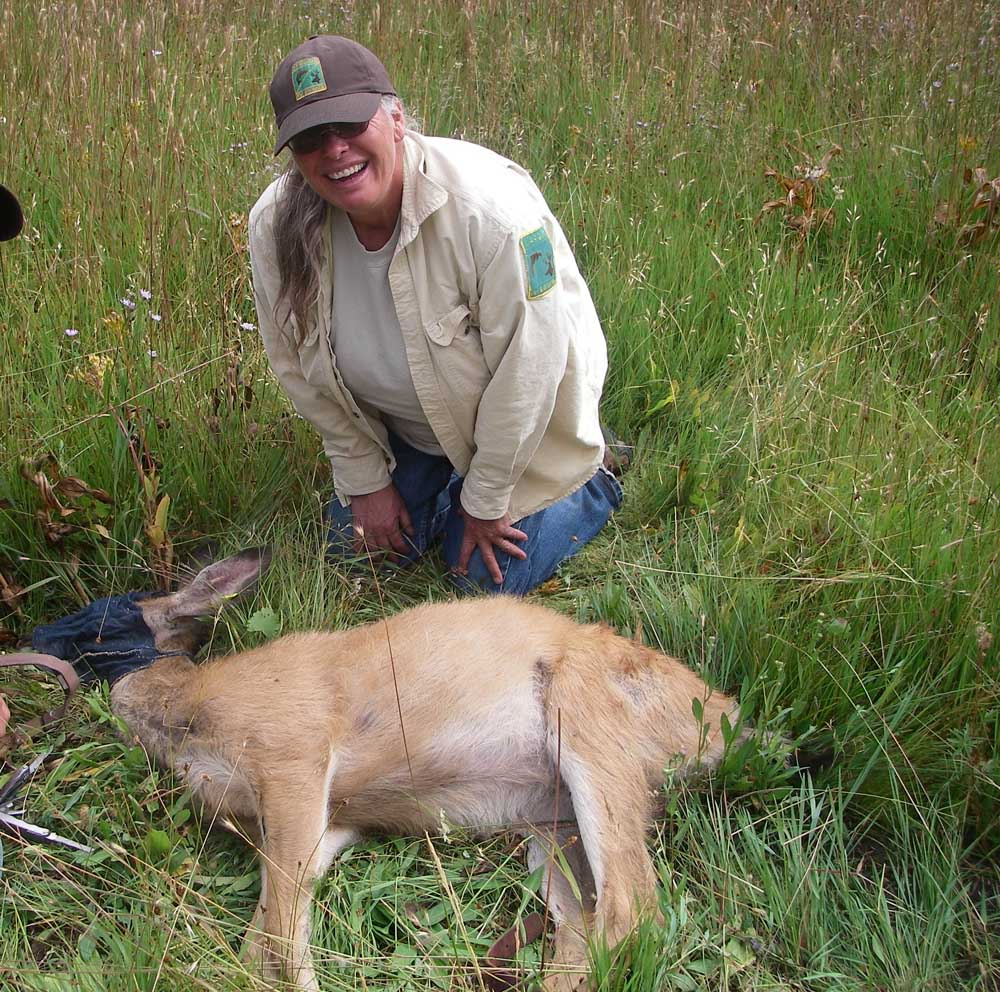Guest Column: The challenges of managing Oregon’s cougar population
Published 9:15 pm Wednesday, January 25, 2023

- Mary Jo Hedrick collaring a mule deer.
Cougars are difficult to observe and count due to their secretive nature and naturally occurring low population densities. Some people believe cougars are extremely rare because they have never seen one, though recent sightings and encounters near urban areas have brought significant attention to these populations.
I was a wildlife biologist for Oregon Department of Fish and Wildlife for 30 years managing wildlife populations and responding to wildlife-human conflicts.
In 1987, ODFW began collecting information from all cougar mortalities, providing a long-term data set of population characteristics. ODFW has also conducted cougar research in northeast and southwest Oregon. These data allow for estimation of cougar reproductive rates, age and sex structure, and juvenile and adult survival rates for Oregon and are annually input into the ODFW cougar population model.
Locations of 1995-2016 hunter-harvested cougars and habitat variables associated with cougar ecology, were used to develop a map of cougar distribution and habitat use in Oregon. Cougars are distributed throughout Oregon in every habitat type, with the highest-quality habitat and highest cougar densities occurring in northeast and southwest Oregon. Habitat in northwest and southeast Oregon may not be optimal, but there are areas with suitable conditions to sustain cougar populations.
Two considerations for cougar management are biological carrying capacity and social tolerance levels.
Biological carrying capacity is the maximum number of individuals the habitat can support over time. For cougars, this is primarily dependent on prey abundance and tolerance for other cougars. Deer and elk have high social, biological, economic, and recreational value, and are an important food source for carnivores. Consequently, managers must balance deer and elk populations to sustain both carnivores and recreational opportunities while meeting statutory obligations to address damage.
Some Oregonians would like to have cougar populations managed at biological carrying capacity, while others want cougar populations reduced. As with deer and elk, social, biological, and other considerations are part of the decision when establishing cougar population objectives. ODFW is mandated to manage wildlife and respond when wildlife poses a threat to human safety or property.
Dispersal is an important adaptive mechanism for cougars. Male offspring typically disperse at higher rates and farther than females increasing recolonizing of unoccupied habitats. Cougar populations are expanding into lower-quality habitat, such as urban areas. Cougars have proven to be highly adaptable to human disturbance. Assuming adequate cover for dispersal, there is no reason to doubt that cougars can utilize urban areas as habitat.
Statewide cougar populations have increased, and individual cougars are frequently encountered in areas of human habitation. Increased human development, combined with increasing cougar populations, has led to an increasing trend in conflict in urban settings.
Wildlife managers respond to human-cougar interactions as they arise by recording sightings and complaints and focus on education. Cougar sightings, damage, and human-safety issues generate numerous calls to wildlife managers. Most of these cougar reports are handled by providing advice. In some cases, a single incident, or a series of sightings and/or incidents will indicate a pattern of behavior that is a human safety concern.
The most common indicators of a human-safety concern are repeated sightings in a populated area, especially during daytime, or cougar behavior that is atypical, including preying on pets and exhibiting a lack of avoidance of humans. A confirmed human-safety threat will initiate a response from ODFW and law enforcement which may require the removal of an individual cougar. Under those circumstances, the individual cougar cannot be relocated where they may become a similar concern.
Wildlife managers must manage for sustainable cougar populations consistent with the primary uses of the land and other wildlife species. In addition, ODFW and law enforcement are required to respond when individual cougars become a threat to human safety or cause damage. This is challenging for wildlife managers due to the dichotomy of the public perception around cougars.
Do you have a point you’d like to make or an issue you feel strongly about? Submit a letter to the editor or a guest column.






